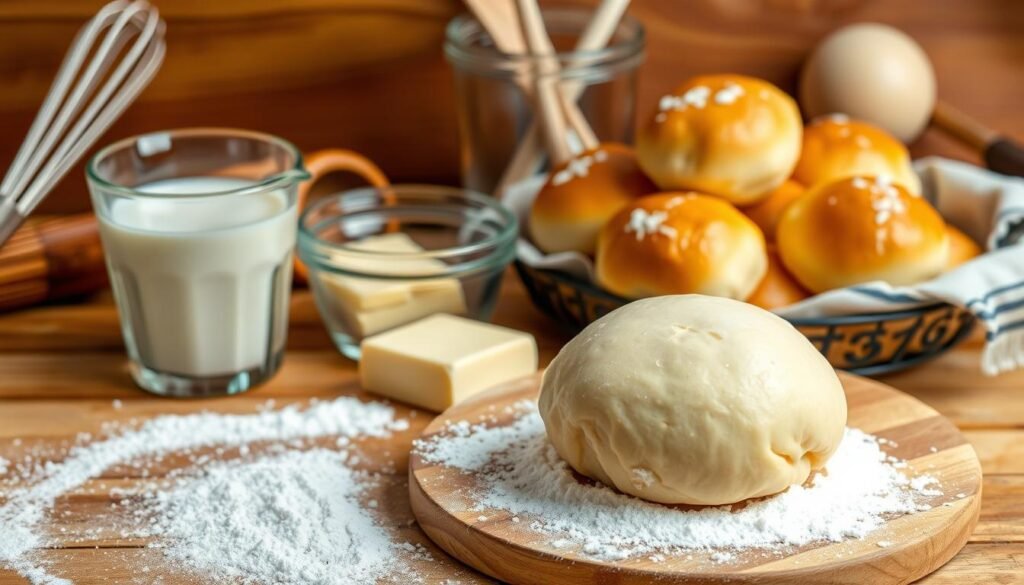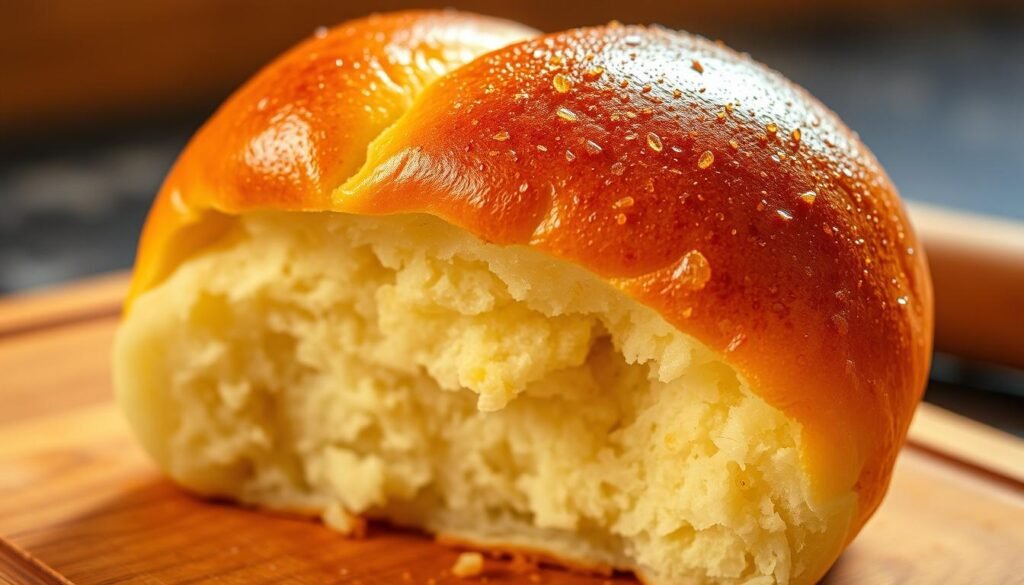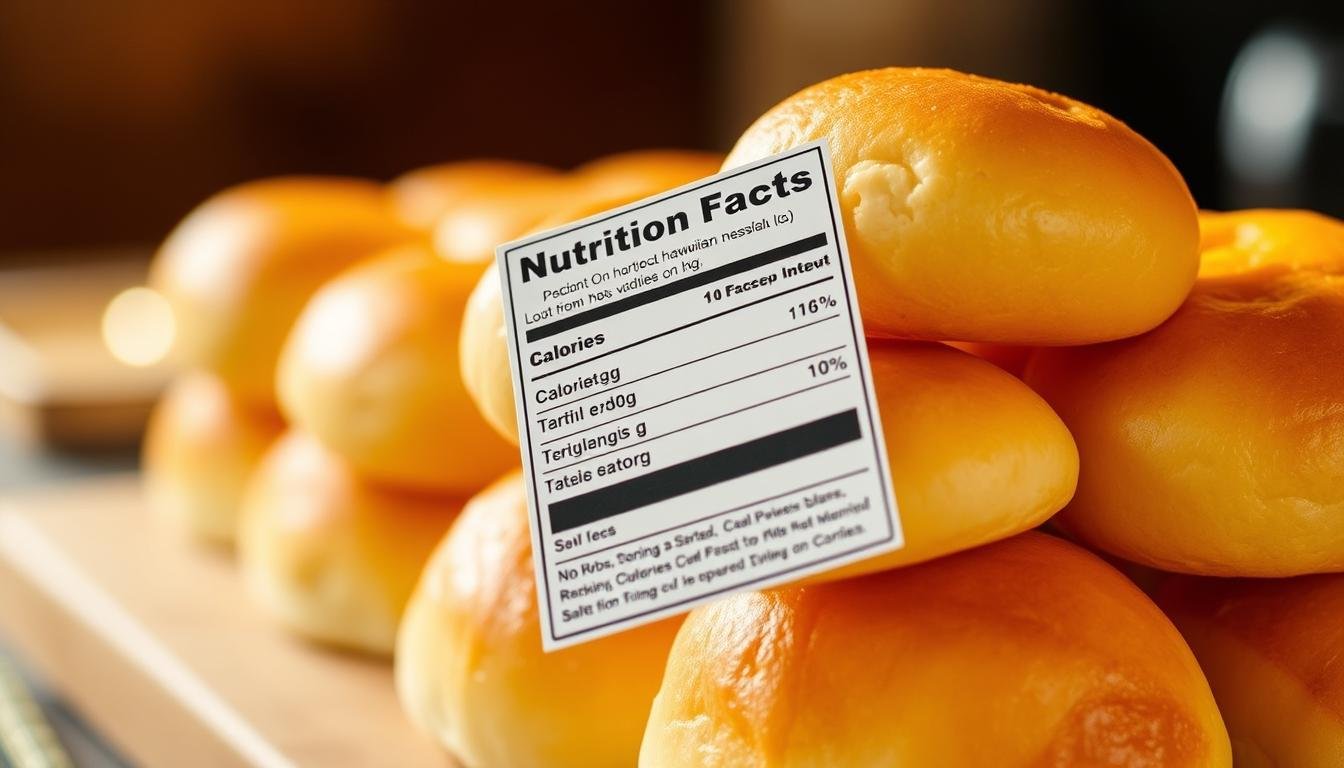Soft, sweet, and irresistibly fluffy—Hawaiian rolls have become a favorite at dinner tables. But with their sugary taste, many wonder if they fit into a balanced diet. Do these golden buns offer any nutritional benefits, or are they just empty calories?
This guide dives into the facts. We’ll explore ingredients like refined flour and added sugars. You’ll also learn how store-bought versions compare to homemade alternatives. By the end, you’ll know whether these rolls deserve a spot on your plate.
Key Takeaways
- Hawaiian rolls contain added sugars, contributing to higher calorie counts.
- Refined flour lacks fiber, which may impact blood sugar levels.
- Store-bought options often include preservatives and artificial additives.
- Homemade versions allow for healthier ingredient swaps.
- Portion control helps manage calorie intake without complete avoidance.
What Are Hawaiian Rolls? A Sweet Introduction
Golden, pillowy, and subtly sweet—these rolls bring tropical flair to any meal. Their distinct taste comes from pineapple juice in the dough, giving them a tender crumb and glossy golden crust. Unlike plain dinner rolls, they’re light, squishy, and SO fluffy, as one baker puts it.

Originally inspired by Portuguese sweet bread, the modern version gained fame through King’s Hawaiian. Today, store brands mimic their signature recipe, but homemade versions let you tweak ingredients for better nutrition.
Common components include:
- Enriched flour (for softness)
- Sugar and eggs (for richness)
- Milk or butter (for moisture)
| Ingredient | Store-Bought | Homemade |
|---|---|---|
| Flour | Bleached, enriched | Whole wheat or unbleached |
| Sweetener | High-fructose corn syrup | Honey or coconut sugar |
| Additives | Preservatives | None |
From sliders to holiday feasts, their versatility shines. Serve them warm with butter or use them for mini sandwiches. Just remember—their sweetness pairs best with savory dishes.
Nutritional Breakdown of Hawaiian Rolls
Nutrition labels reveal what’s really inside these popular dinner rolls. While their taste is undeniable, the numbers tell a different story—one of quick energy with little nutritional payoff.

Calories and Macronutrients per Serving
A single roll typically packs 90–130 calories, mostly from carbs. Here’s how major brands stack up:
| Brand | Calories | Carbs (g) | Fiber (g) | Protein (g) |
|---|---|---|---|---|
| Classic | 110 | 21 | 0 | 3 |
| Savory Butter | 130 | 22 | 0 | 4 |
| Whole Wheat | 100 | 18 | 2 | 5 |
Key takeaways:
- Refined flour dominates, offering 16g carbs per roll but zero fiber.
- Protein hovers at 3–4g—far less than whole-grain alternatives.
- Added sugar (4–6g per roll) contributes to empty calories.
Vitamins and Minerals: What’s Missing?
Processing strips away nutrients naturally found in whole grains. You won’t get:
- Iron or B vitamins (lost when bran is removed).
- Magnesium (key for metabolism).
- Antioxidants (abundant in less processed flours).
“Enriched flour adds back some nutrients, but it’s a poor substitute for whole grains’ natural profile.”
For sustained energy, pair these rolls with protein-rich foods like grilled chicken or avocado.
Are Hawaiian Rolls Healthy? The Sugar Problem
That hint of sweetness in every bite? It comes at a cost. These rolls pack nearly double the sugar of traditional dinner breads—3–5g per serving. For perspective, three rolls hit 15g, covering 60% of a woman’s daily limit.

Added Sugars and Blood Sugar Spikes
High-fructose corn syrup (HFCS) is a common culprit. It digests fast, causing sharp blood sugar spikes. Over time, this strains insulin response, raising *diabetes* risks.
The American Diabetes Association caps added sugar at 25g daily for women. Just one meal with these rolls could blow half that budget. Pair them with protein or fiber to slow absorption.
Health Risks Linked to Excessive Sugar Intake
Regular indulgence has consequences:
- Weight gain: Studies tie excess sugar to visceral belly fat, up 10% in 10 weeks.
- Tooth decay: Sticky sugars cling to enamel, feeding cavity-causing bacteria.
- NAFLD: Non-alcoholic fatty liver disease risks rise with fructose overload.
“Sugar-sweetened foods offer fleeting pleasure but long-term metabolic havoc.”
Moderation is key. Enjoy them as occasional treats, not daily staples. Your health—and teeth—will thank you.
Refined Flour and High Glycemic Index
Behind their golden crust lies a story of processed ingredients and quick digestion. The main flour used undergoes heavy refinement, stripping 78% of wheat’s original nutrients—including fiber, iron, and B vitamins.
Impact on Digestion and Satiety
Without fiber, these rolls digest rapidly, spiking blood sugar. A American Journal of Clinical Nutrition study links high-glycemic foods to overeating. Compare that to sprouted grain bread, which keeps you full longer due to its slow-digesting carbs.
Long-Term Health Concerns
Regularly choosing refined flour may harm your health. Research ties high-glycemic diets to type 2 diabetes and heart disease. A BMJ study found ultra-processed foods like these contribute to weight gain.
“Refined carbs disrupt gut bacteria balance, potentially triggering inflammation.” — Nature, 2015
According to the USDA, Americans eat too many refined carbs. Swapping to whole grains can reduce these risks while still satisfying cravings.
Additives in Packaged Hawaiian Rolls
Ever peeked at the ingredient list on packaged Hawaiian rolls? Beyond flour and sugar, you’ll find a lineup of additives that keep them soft and shelf-stable. While these chemicals pass FDA approval, their long-term health effects spark debate.
Common Preservatives and Their Effects
Monoglycerides and calcium propionate top the list. These ingredients prevent mold but may irritate sensitive guts. A 2021 CSPI report flags sodium stearoyl lactylate—an emulsifier—for potential inflammation links.
Watch for hidden risks:
- HFCS: Boosts sweetness cheaply but spikes blood sugar faster than cane sugar.
- Artificial colors: Some brands use yellow #5 for that golden hue.
- Dairy allergens: Whey powder often hides in the dough.
Natural vs. Artificial Ingredients
King’s Hawaiian keeps its recipe simpler than generic brands. Their rolls skip artificial dyes but still use preservatives. For cleaner labels, EWG advises choosing breads with:
“Fewer than 10 ingredients and no ‘unfamiliar chemical names.’” — EWG’s Dirty Dozen Guide
Homemade versions win by swapping in honey for HFCS and whole wheat for refined flour. Your health—and taste buds—will notice the difference.
Caloric Density and Portion Control Tips
Balancing indulgence with nutrition starts with understanding portion sizes. These sweet buns pack a caloric punch, but smart strategies let you enjoy them without derailing your diet.
Comparing Brands: Calories per Roll
Store-bought versions vary widely. Here’s how popular options stack up:
| Brand | Calories per Roll | Serving Size |
|---|---|---|
| King’s Hawaiian | 90 | 1 roll (28g) |
| Generic Store Brand | 130 | 1 roll (35g) |
| Whole Wheat Version | 80 | 1 roll (25g) |
Opt for smaller rolls or whole-grain versions to cut calories by 20–30%.
How to Enjoy Them Mindfully
Try *volumetric eating*: Pair one roll with a protein like grilled chicken and roasted veggies. This balances the meal and keeps you full longer.
- Air fryer hack: Reheat at 350°F for 2 minutes to restore crispness without extra oil.
- Restaurant tip: Request a half-order with a side salad to control portion sizes.
“Refined carbs spike insulin, triggering hunger hormones. Pairing them with protein slows digestion.” — Nutrition Journal, 2022
For more on balancing meals, explore effective weight-loss tips. Small changes make big differences!
Homemade vs. Store-Bought: Which Is Healthier?
Baking your own sweet bread lets you control what goes into every bite. Store shelves offer convenience, but homemade versions win for nutrition and flavor. A few smart swaps can transform this treat into a better choice.
Recipe Tweaks for Better Nutrition
Start with the dough. Replace half the white flour with whole wheat for extra fiber. This simple change adds 2g of fiber per roll—four times more than store brands.
Sweetener matters too. Swap refined sugar for honey or maple syrup. Tests show this cuts sugar content from 12g to 8g per serving. Your recipe will still taste sweet but with fewer blood sugar spikes.
- Use fresh-milled flour for maximum nutrients
- Add vital wheat gluten for lighter texture
- Proof dough overnight for better digestibility
Avoiding Additives at Home
Your kitchen becomes a clean-food lab. Skip the preservatives found in commercial rolls. No monoglycerides or calcium propionate—just real ingredients.
Essential tools make baking easier:
“A stand mixer cuts kneading time by 75% compared to hand mixing.” — Bread Science Journal
Freeze unbaked dough balls for fresh rolls anytime. Just thaw, proof, and bake. At $0.35 per roll, you save money while eating cleaner.
For step-by-step guidance, try this whole wheat version. Your oven will fill the house with that signature sweet aroma—minus the guilt.
Healthier Alternatives to Hawaiian Rolls
Craving that sweet, fluffy texture but want better nutrition? Plenty of options deliver the same satisfaction without refined flour or excess sugar. From store-bought picks to DIY recipes, here’s how to enjoy bread that loves you back.
Whole-Grain and Low-Sugar Options
Dave’s Killer Bread offers a whole-grain version with 5g fiber per serving—five times more than traditional rolls. For keto fans, Carbonaut GF packs just 60 calories and 0g net carbs. Both keep blood sugar steady.
Prefer baking? Try this cloud bread recipe:
- Whip egg whites with cream of tartar until stiff
- Fold in Greek yogurt for protein
- Bake at 300°F for 25 minutes
Creative Substitutes for Sandwiches
Skip the butter and buns altogether. Grill portobello mushrooms as “buns” and stuff them with pesto chicken. Or slice sweet potatoes into rounds for slider bases—they add vitamins and natural sweetness.
“Low-carb swaps like lettuce wraps or eggplant slices cut calories while adding nutrients.” — Nutrition Today
For weeknights, toast whole-grain English muffins or use collard greens as wraps. Pair with high-protein fillings like turkey or hummus to balance the meal.
When Can Hawaiian Rolls Fit into a Balanced Diet?
Enjoying sweet bread doesn’t have to derail your diet goals. With smart strategies, you can savor these treats while keeping meals nutritious. The key lies in timing, portion control, and clever pairings.
Pairing Strategies to Mitigate Sugar Impact
Combine these rolls with protein or fiber to slow digestion. A Journal of Nutrition study found this reduces blood sugar spikes by 30%. Try these combos:
- Turkey sliders: Lean protein balances the carbs.
- Avocado toast: Healthy fats add staying power.
- Vinegar-dressed salads: Acidity lowers glycemic load.
“Pairing carbs with fats or proteins blunts insulin response, making treats safer for blood sugar.” — ADA Guidelines
Occasional Treat vs. Regular Staple
Mayo Clinic suggests limiting refined carbs to 2–3 servings weekly. Athletes might enjoy them pre-workout for quick energy. For others, the 80/20 rule works best—80% whole foods, 20% indulgences.
| Meal Plan | Roll Allowance | Pairing |
|---|---|---|
| Weekday Lunch | 1 roll | Grilled chicken + spinach |
| Post-Workout | 2 rolls | Peanut butter + banana |
| Sunday Dinner | 1 roll | Baked salmon + asparagus |
Balance is everything. A single roll won’t harm your health, but daily habits shape long-term outcomes. Choose quality over quantity every time.
Conclusion: Should You Eat Hawaiian Rolls?
The verdict on these fluffy buns isn’t black and white. While they lack fiber and pack sugar, occasional enjoyment fits a balanced diet. Daily habits, though, may impact health long-term.
Take control with three steps:
- Scan labels for additives or HFCS.
- Try whole-wheat flour in homemade hawaiian rolls.
- Pair with protein to slow sugar absorption.
Prefer cleaner options? Bake a batch using honey instead of refined sugar. One bite proves flavor and nutrition can coexist.
Final answer: Yes—but savor mindfully, and keep portions small.




